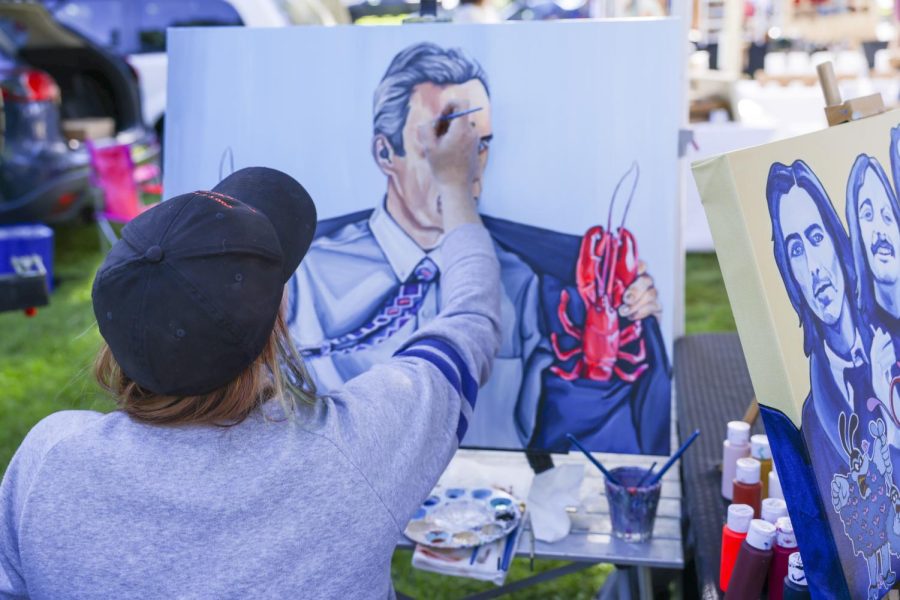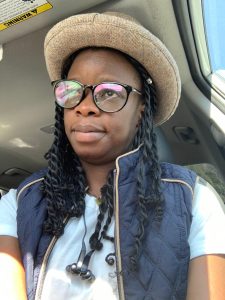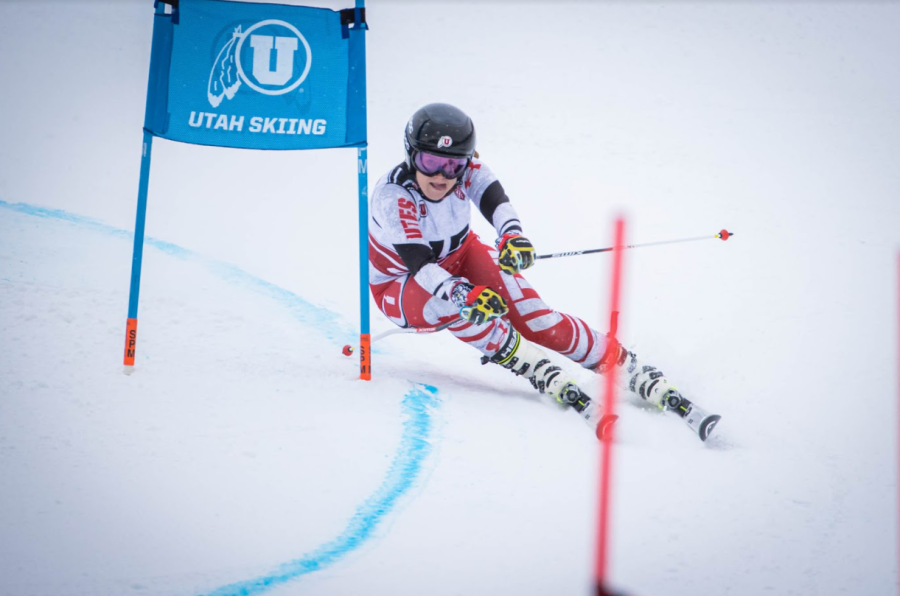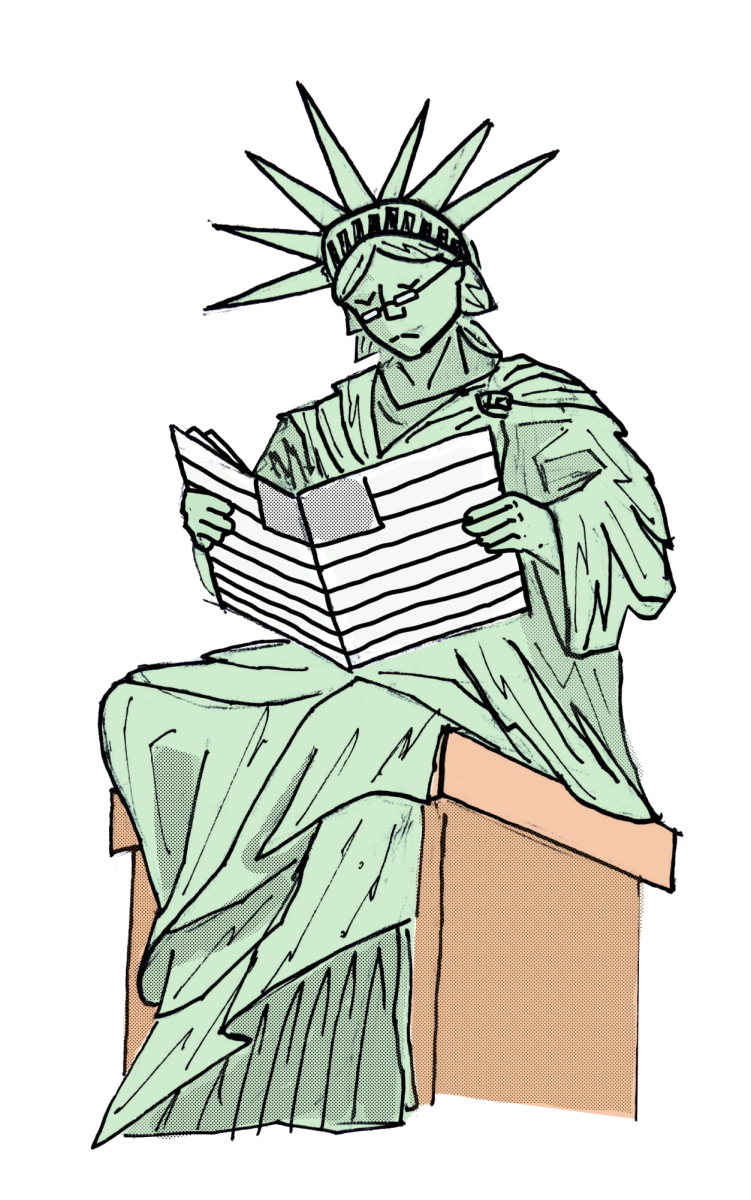Being a Professional Artist Without an Art Education
Jenna L. Rogan works on a painting at the Pioneer Park farmer’s market in Salt Lake City, Utah on Saturday, June 25, 2022. (Photo by Amen Koutowogbe | The Daily Utah Chronicle)
August 28, 2022
Any professional artist has certainly been met with warnings of the lack of financial opportunity in the field. Art buildings are recognizable on campuses with their dated linoleum flooring, irregulated temperatures and instructors rushing around with home-brought art supplies. Meanwhile, fields such as business sport lavishly funded edifices, such as the ones on our own University of Utah’s campus. The reason for these discrepancies in amenities is simple — funding for art programs is sparse. The starving artist trope is an idea deeply rooted in our society despite the fact that the global art market is worth approximately 65 billion dollars, according to Statista.
To Degree or Not to Degree?
To become a part of the enormous art market, it is assumed that, at minimum, one needs a Masters of Fine Arts. While there are a multitude of benefits to a professional art education, such as the opportunity to get skilled mentorship in varied mediums and access to databases and networking opportunities, an MFA is certainly not a prerequisite for a successful career in the arts. Higher education should not be discounted, but it is clear that there is no one path to success, especially in the art world. That said, I had the opportunity to speak with two local Utah artists who both found great success without art degrees.
Tattoo Therapy
When Valerie Thompson decided she was feeling unfulfilled in her career, she moved away from her psychology education in favor of a different nine-to-five. Though she had no formal art education, Thompson took a year off to explore creative ventures, as she had a lifelong love of dabbling in visual arts. Invited to hang some of her work at a local coffee shop, Thompson was scouted by a tattoo artist who asked if she had ever considered tattooing. While she had not previously, Thompson agreed to try her hand at it.
In a three-year span, Thompson, now more popularly known as @JanetheStranger on Instagram, has moved from paying the traditional tattoo dues of creating custom works to uniquely tattooing only original artwork. Once selected from an extensive waitlist, a client has an hour to browse Thompson’s flash tattoo collection to select a piece. A flash design is only used once, giving the client a unique work of art to carry with them.
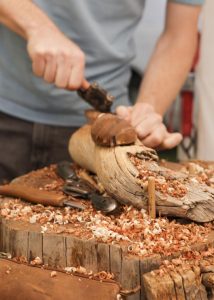
Working out of Salt Lake City’s Misery and Co. tattoo shop, Thompson describes her style as illustrated surrealism, and draws inspiration from many influences including Dalí, Klimt and Michelangelo. Blending traditional and personal style “elevate[s] the work to a point where it stands out as unique, but still gives space to honor the original artwork,” Thompson said.
She said she admires other visual artists’ bravery in submitting work open to critique in galleries and museums. However, Thompson also acknowledges her own bravery needed to watch her works literally walk out the door, sometimes never to be seen by her eyes again.
Social (Art)Work
Much like Thompson, local artist Rachael Skidmore found herself in the art world in an unconventional manner. Skidmore, who utilized her social work degree for the better part of a decade, joined the Salt Lake artist community via fashion. Originally a reseller of vintage clothing, Skidmore made a switch in 2019 when she began creating her now-famous polymer clay earrings. Skidmore found viral success during the pandemic with her online business Made by Maeberry and now sells out of Salt and Honey Market. Perhaps, her vibrant creations certainly brought a much-needed playfulness to an otherwise dark period.
“My hope is that my pieces are able to boost serotonin in those that wear them,” Skidmore said. “If that occurs, I feel successful in my art.”
Unconventional Paths
Though these artists create wildly different works, both have experienced doubt and negativity in their career choices. Thompson recalled an encounter in which a stranger said, “No. Don’t do that. That’s not a viable career, there’s no money in that,” after noting her career as a tattoo artist. Skidmore recollected a particularly painful experience with a loved one stating Skidmore was not an artist because she had not gone to art school. However, Thompson’s years-long waitlist of clients and Skidmore’s near 100,000 followers and profit margins help them define success differently.
What could possibly be the most meaningful commonality is the two artists’ shared bravery in making what they were told were hobbies into their livelihoods. I believe that speaks to the fact that we all have some twinge of imposter syndrome, even those of us who show up and create despite it. Degree or no degree, Thompson and Skidmore are examples of the results that come at the junction of intrepidity and skill.


